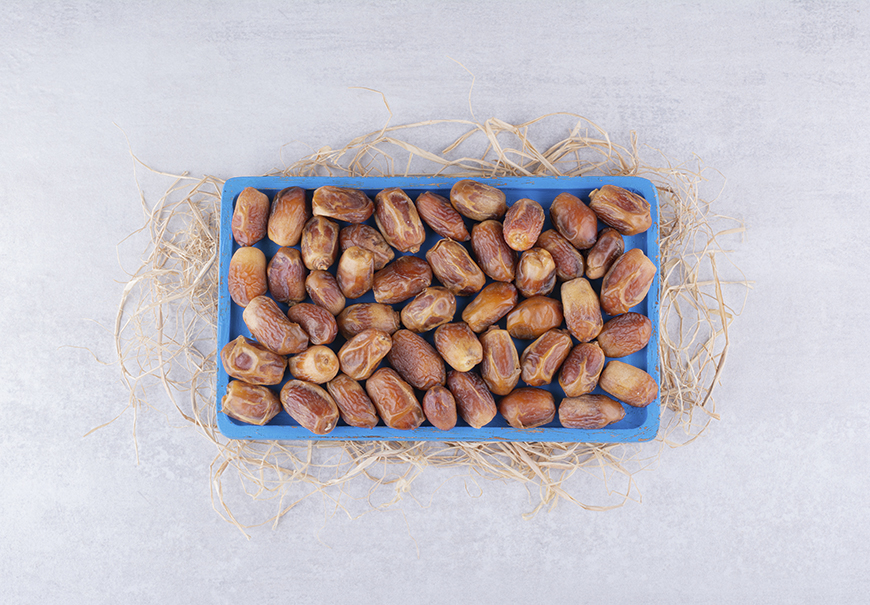Production Process Of Dates

The production process of date fruits (the fruit of the date palm tree), the process involves several steps from cultivation to harvesting, processing, and packaging. Here's an overview of how dates are produced and processed for market:
1. Cultivation
Dates are grown primarily in hot, dry climates, such as in countries like Saudi Arabia, Egypt, Iran, and other Middle Eastern and North African regions. Date palms thrive in sandy, well-drained soil, and the trees can grow to heights of 15 to 30 feet. Here's how they are cultivated:
Planting: Date palms are usually grown from offshoots (suckers) of existing trees. These offshoots are planted in the ground, typically in rows.
Growth: Dates take several years to begin fruiting, typically around 4-8 years after planting. Date palms require a lot of sunlight and heat, making them perfect for desert climates.
2. Flowering and Pollination
Date palms have male and female trees, and cross-pollination is required for fruit to develop:
Pollination: In nature, pollination is done by wind, but in commercial farming, it is often done manually to ensure a high yield. Pollen from male trees is transferred to the flowers of female trees.#
3. Harvesting
Dates mature in stages and are typically harvested in the late summer to early fall. There are three stages of maturity:
Kimri (unripe stage): Green and hard.
Tamar (ripe stage): Fully mature, dark in color, and sweet.
Rutab (semi-ripe stage): Soft but not fully dried.
Dates are harvested when they reach full maturity. The fruit can be plucked by hand or using machinery.
4. Processing
Once harvested, dates go through various processing steps to ensure they are clean and suitable for sale:
Cleaning: Dates are washed thoroughly to remove dirt, dust, and pesticide residues.
Sorting: Dates are sorted based on size, color, and quality. Any damaged or overripe fruit is discarded.
Drying: Dates are dried to improve their shelf life and concentrate the sugars. Drying can be done naturally in the sun or through mechanical dryers.
Pitting: The date pits are removed either manually or by machines, especially for dates intended to be sold without pits.
Packaging: Dates are packaged in various forms, including whole, pitted, or as date paste. Packaging can be done in bulk or in consumer-sized packages for retail.
5. Storage and Distribution
After processing and packaging, dates are stored in cool, dry conditions to maintain their quality. Dates have a long shelf life, but they should be kept away from moisture and heat.
6. Manufacturing Date Products
Dates are sometimes turned into value-added products such as:
Date Syrup: Made by boiling down the juice from dates.
Date Paste: Made by grinding dates into a smooth paste.
Date Sugar: Made by dehydrating dates into a powder that can be used as a natural sweetener.
Date-based snacks: Dates are often combined with nuts, seeds, and other ingredients to create energy bars and snacks.
Summary
To "manufacture" dates, you essentially need to cultivate date palms, harvest the dates when ripe, process them (including cleaning, sorting, drying, and possibly removing pits), and then package them for sale. If you're referring to creating products made from dates, additional steps like processing into syrup, paste, or other goods are involved.




